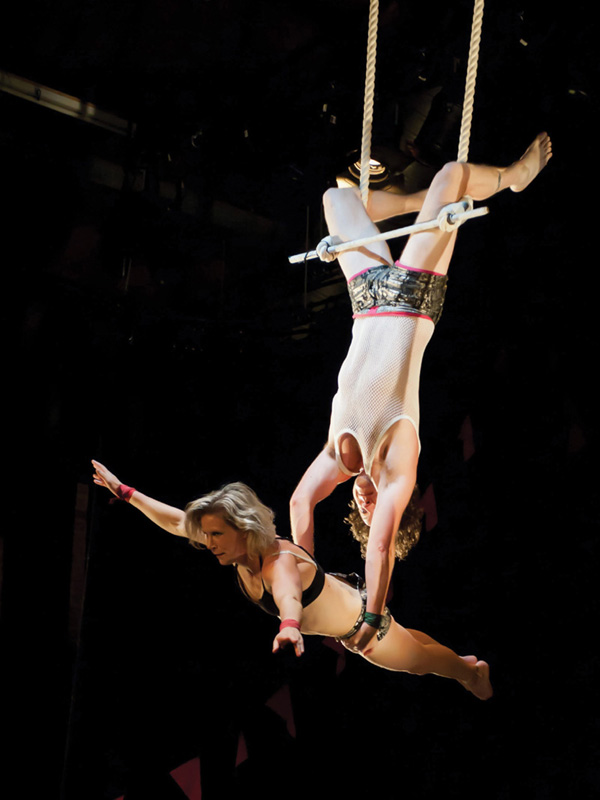
WHAT IT IS Soaring through the air beneath the Big Top
WHY YOU WON’T DO IT If the flying doesn’t terrify you, then hitting the ground should
The flying trapeze act was made famous in the mid-19th century by the legendary Jules Léotard, and there’s still no more spectacular sight beneath the Big Top than trapeze artists executing impossible tricks as they swing high in the air. So how can you, too, learn to ‘fly through the air with the greatest of ease’?
Most modern trapeze acts include a flyer and a catcher, whose relationship needs to be underpinned by mutual trust. It can take years to reach performance standard, training for perhaps four hours a day, six days a week, but there’s plenty of opportunity for novices to test their skills along the way. You’ll need to be fit, extremely brave, prepared to take a few knocks and, obviously, you’ll need a head for heights. You will likely be working at a height of 6–12 metres (20–40 ft) above the ground – high enough for any right-thinking person to demand a safety net (and a safety harness while you’re learning). Léotard, working in the days before such equipment, laid out a series of mattresses in case of crash-landing.
Wear sensible sportswear – the spangly costume can come later. Grips made from tape are a valuable asset to protect your hands. Start by perfecting simply swinging from the bar. This is easier said than done – stepping off the platform for the first time is a true leap of faith. Try to stay calm – rub your hands with chalk to dry them and improve your grip, and grasp the trapeze firmly in both hands. Aim to step off as if you were just going for a casual walk. This will provide you with a little initial momentum, which you can increase by swinging your legs. A more dramatic launch can cause the trapeze to tense suddenly, leaving you hanging in mid-air without momentum.
Once you’ve perfected the swing, you can start learning some simple manoeuvres and variant grips. Eventually you will be ready to work with a catcher. This essentially involves you letting go of your bar mid-swing and launching yourself into the grip of the catcher on the other bar (the ‘catch trap’). Communication here is vital – the catcher will call to indicate they are ready to receive you, you will call to let them know you’re on your way, and so on. Ultimately, the catcher will launch you back towards your trapeze (this is called a ‘return’). All the while you will have the opportunity to entertain with any number of moves, from pirouettes and somersaults to ‘angels’ (when the catcher grips you by your feet and an arm).